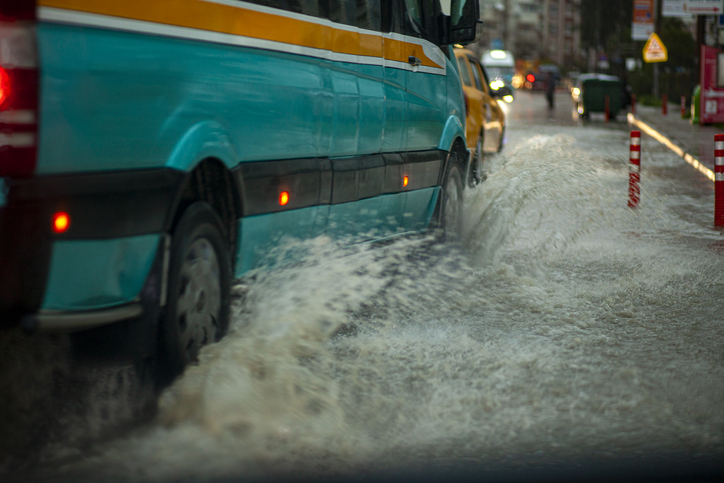
The dangers of hydroplaning
(August 23, 2022) The National Weather Service has issued a flash flood warning for San Antonio and the surrounding hill country for the extremely heavy rain we have recently experienced. This rain is expected to stay for the remainder of the week. Driving in the rain comes with many complications and unique dangers that can increase your risk of being in an accident. In this article, we’ll take a look at some safety tips for driving in the rain, as well as the causes of hydroplaning and how to avoid it.
Did you know?
An auto accident happens every 53 seconds in Texas. Ten percent of these crashes (roughly 60,000) are caused by inclement weather conditions. 85% of these crashes happened during rainfall.
Hydroplaning – What it is and how to avoid it
Hydroplaning occurs when water builds up in front of a vehicle’s tires faster than the vehicle’s weight can push it away. This phenomenon causes the car to float on a thin layer of water between the vehicle and the road. This is a very dangerous situation, as it significantly increases the chances of the car skidding or drifting out of its lane.
There are many factors that contribute to hydroplaning, including:
Environmental – How fast and heavy the rainfall is, as well as how long it’s raining contributes to hydroplaning.
Roadway factors – Pavement micro and macrotexture, roadway curvature, the width of the pavement, and pavement cross-slope all contribute to the likelihood of a vehicle hydroplaning.
Driver factors – The most critical factors are driver factors. Overall speed, braking and acceleration, as well as steering, all contribute greatly to the likelihood of a vehicle hydroplaning.
For additional information on what causes hydroplaning, please visit this report.
Avoiding Hydroplaning
The Federal Motor Carrier Safety Administration recommends that a vehicle reduce their speed by at least thirty percent when driving in inclement weather conditions. One of the main causes of hydroplaning and other accidents is driving too fast. Additionally, it is recommended to avoid low-lying areas or puddles when possible to reduce the risk of hydroplaning. The depth of the water on the road is one of the main contributing factors to hydroplaning.
How to Handle a Hydroplaning Vehicle
The Texas Department of Insurance lists four steps to follow when you experience hydroplaning. First, take your foot off of the accelerator. You need to give your tires time to catch up with the water flow and regain traction. Second, turn towards the skid. Though it may seem counterintuitive, turning in the direction your vehicle is skidding (without accelerating) will allow your tires to begin to regain their traction. Third, gently begin to straighten your vehicle out. As you feel your tires regain traction, slowly begin to correct the skid. Finally, brake gently as needed. Now that you have regained control, you may now start to pump the brakes and bring your vehicle to safe speeds.
Take a look at this Driving in Bad Weather Fact Sheet for more tips on driving in inclement weather.
Have you or a loved one been injured in an inclement weather auto accident in San Antonio?
The Law Office of Carabin Shaw has been representing the victims of inclement weather accidents in San Antonio for thirty years. Contact our team today at 800-862-1260.
 Texas Injury Lawyers Blog
Texas Injury Lawyers Blog

